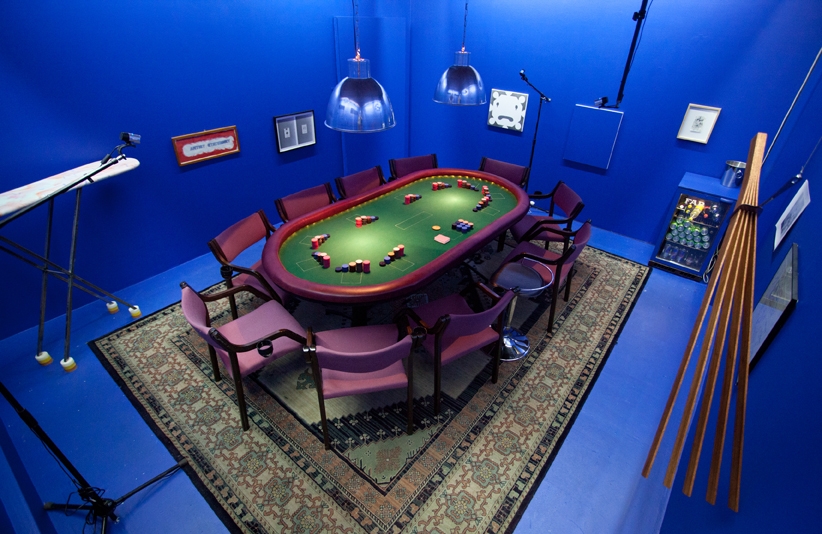Tidens Krav has closed its door for the final time. The four artists who ran the odd wood-panelled space in the centre of Oslo are off to concentrate on their own work and other projects. It wasn’t just the fact that the small social space that adjoined the gallery – a big table in the middle, and a bar to one corner seemingly constantly stocked with beers straight from the crate – looked like a sauna that made this artist-run initiative unique. It was also the way Øyvind Aspen, Anders Holen, Linda Lerseth and Mercedes Mühleisen, using a moniker that translates roughly as ‘time’s craving’, or with more nuance, ‘whatever is required by the now’, ran the space.
They took the ‘open call’ term literally, picking artists for solo exhibitions entirely through voicemail pitches
Take, for instance, the open call they staged in 2011, the year the gallery was inaugurated. Or rather, take how they took the ‘open call’ term literally, picking artists for solo exhibitions entirely through the voicemail pitches left on a specially set up ansaphone. One can still listen on the gallery’s website to the crackly recordings, collectively titled Tele-applications, of various ideas being laid out in Norwegian and English, together with the automated callbacks made to those successful pitches. The pitch of one artist, Düsseldorf-based Chris Succo, was succinct to the point of contrariness. When it comes to the moment in the message where the artist is supposed to describe the show, Succo just says: “Right, I’d like to make an exhibition in July or August next year titled Tornado. Thank you and goodbye.” The weird thing is, it sounds like the German artist, who was then based in the UK, is actually saying ‘tomato’. Even Tidens Krav wasn’t sure at the time, but buoyed by Succo’s chutzpah, they accepted him, alongside the six other artist proposals with perhaps more verbosely made pitches.
Or one could consider the further semantic play the gallery indulged in when invited to take part in 24 Spaces at Malmö Konsthall, a show that formed part of the 2013 Malmö Nordic festival. The artists behind Tidens Krav say that they saw the festival as setting out to ‘celebrate the Nordic’. Their response was to bake a 1:200 scale cakereplica of the konsthall and turn the whole thing into an actual celebration (though with the public’s cake-eating restricted to within the red line demarcating their allotted space within the Konsthall, in deference to the institution’s ‘no eating’ rule).
On my visit to the space earlier this year, there was an exhibition of Sissel Blystad’s mesmerising psychedelic tapestries, programmed by the gallery, that at least at first glance seemed to lack the usual contrivances of the way it normally operates. Perfectly hung, Blystad’s work was intricately made and very desirable (although the Norwegian artist’s 40-year career remains, for now at least, head-scratchingly under-the-radar), and everything about the show seemed to belie Tidens Krav’s normal jesterlike tactics. That is until visitors read a sheet of paper explaining the gallery’s policy for sales. Complicated (and at times sounding comically like some sort of pyramid scheme), it outlined a 50/50 split with the artist. However, after a year, should any money be left in the Tidens Krav coffers once their rent was paid, it was split between the buyers, but only those that were also artists.
Tidens Krav’s jokes aren’t just jokes for the sake of it, but work as little digs or niggles to the accepted systems of the artworld. Their final blowout was no exception and again addressed questions of distribution and circulation within art. Various collectors, institutions and even the Nasjonalmuseet were invited to play poker, each staking a work from their collection. The whole thing was filmed and commentated on (complete with the kind of graphics that cable channels use when televising the card game). Collector Nils Wogsted won the game, picking up a ten-work pot. It wasn’t just a win for Wogsted on that 123rd hand, though; it was also a full house that saw Tidens Krav reach the end of their game.
This article was first published in the December 2014 issue.
